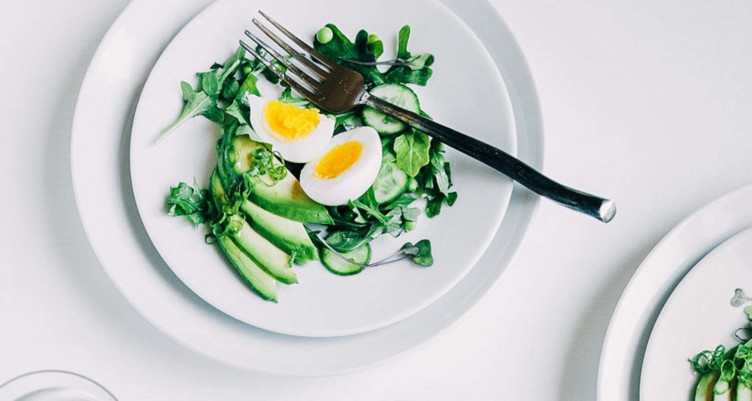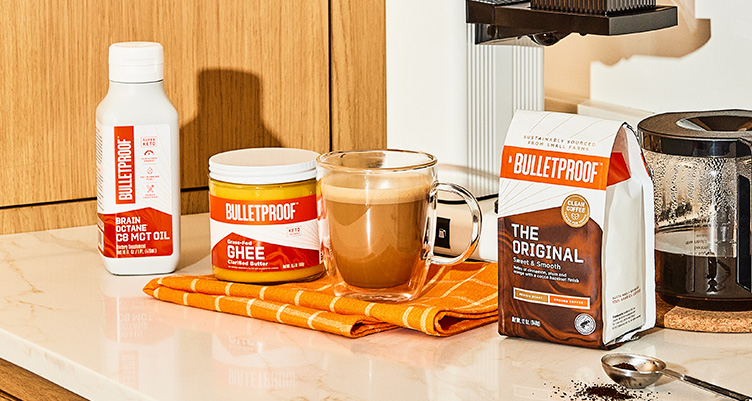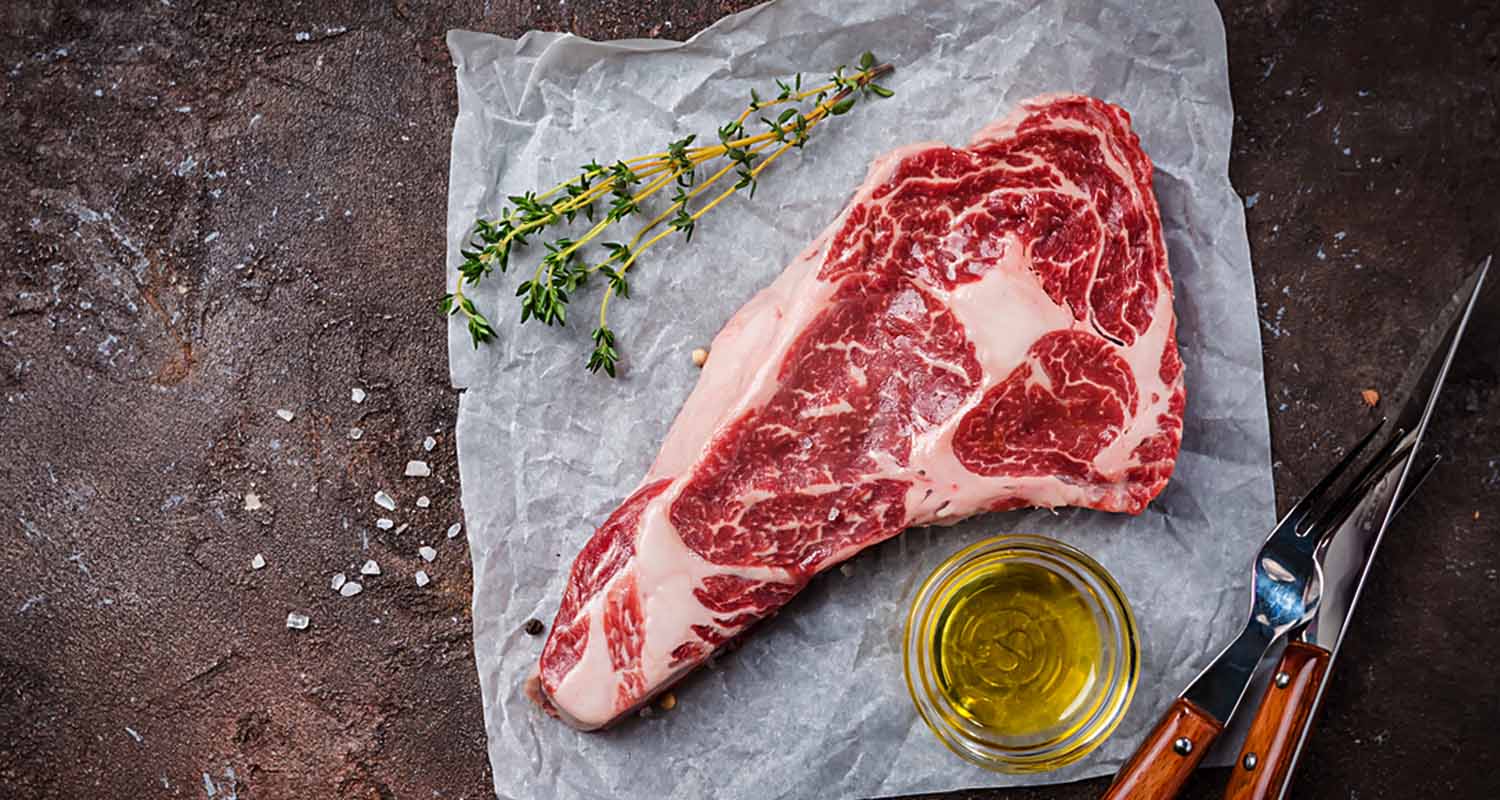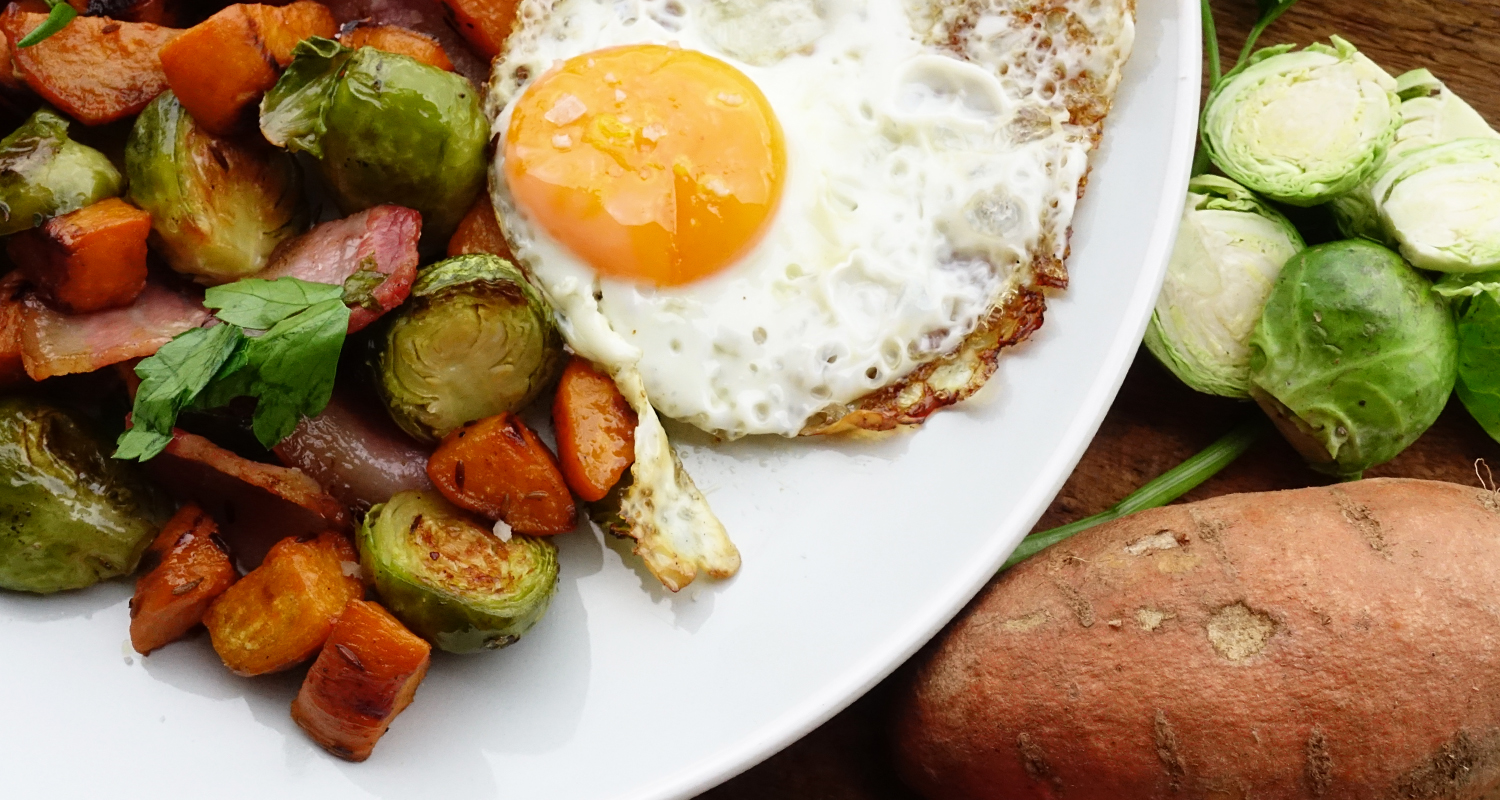Is Going Low-Carb Right for You?

- The low-carb diet is one of the easiest diets out there and delivers almost instant benefits.
- Swapping high-carb foods for options with fewer carbs and more flavor is easy, and you may not even realize you’re dieting.
- With this way of eating, you can experience various health benefits, like weight management, improved brain function and more.
Among the endless list of popular diets, the unsung hero is undoubtedly the low-carb diet. Unlike stricter regimens, opting for low-carb offers flexibility when it comes to your food choices. Dieting is not a one-size-fits-all approach, and the low-carb diet plan allows for more customization. Not ready for keto? Not sure about paleo? Try the low-carb lifestyle on for size to decide if it’s a sustainable, long-term path, or a feasible entry point toward a more disciplined way of eating.
What is the low-carb diet plan?
The low-carb diet plan delivers loads of health benefits, and it’s a great way to maintain a healthy weight. What sets this diet apart from others is that it’s so easy to start—and it’s even easier to integrate into your everyday lifestyle. The goal of going low-carb is to restrict your carbohydrates, while supplementing other nutritious food groups in their place.
Wondering how to begin low-carb dieting? The three basic steps are:
- Identify the carbohydrates you eat: This includes foods that are sweet and sugary, or those that are soft, white and starchy, like baked goods, white bread, pizza, potatoes and rice.
- Replace carb-heavy foods with more protein-rich options: Think meat, poultry, eggs, fish, protein powders and dairy, as well as nuts and seeds.
- Add quality fats to your plate: Switch out canola and vegetable oil, as well as shortening and margarine, for quality fats. We like Bulletproof Grass-Fed Ghee and butter, coconut oil, MCT oil (specifically, Bulletproof Brain Octane C8 MCT Oil) and olive oil. Add foods like avocados and full-fat yogurt for healthy fats, too.
Pro tip: One way to make it easier to transition away from your favorite carbs is to research different types of non-GMO, low-carb products made from sprouted and whole grains. For example, if you have a daily sandwich with white bread, try making your sammie with a lower-carb, nutrient-dense bread instead.
How carbohydrates affect the body

As your body adapts to eating fewer carbohydrates, you may start seeing improvements right away. To illustrate, carb overload can make you feel pretty crummy. Some of the side effects that indicate you may be consuming more carbs than your body can handle include the below:
- Weight gain
- Long-term inflammation
- Fatigue
- Moodiness
- Brain fog
On the converse, when you ditch the carbs, you can stay at a healthy weight and feel better. The low-carb lifestyle helps you work toward experiencing fewer food cravings, improved brain function, and more balanced blood sugar levels.[1][2]
Additionally, studies show that low-carb diets can prevent and/or treat type 2 diabetes and high blood sugar levels.[3]
A low-carb diet commonly involves eating more gluten-free foods. Some people feel better with this style of eating because they may have struggled with a gluten sensitivity, or even Celiac disease, a condition where the ingestion of gluten damages the small intestine.[4]
When it comes to surveying your carb count, keep in mind that the optimal amount of carbs is different for everyone. For example, some low-carb dieters can reap the benefits of carb restriction by consuming between 50-100 grams per day, while others may need to cut down their daily carb consumption between 20-50 grams. Some low-carb dieters may be able to see results by consuming up to 150 grams of carbs per day (we call those folks the lucky ones…wink, wink), though this is more typical as a long-term weight maintenance tactic.
Experiment to find out how many carbs in a low-carb diet feel right for you and your own body.
Related: How to Find Your Ideal Carb Intake
Low-carb vs. keto: What’s the difference?

When learning how to start a low-carb diet, you may notice several similarities in comparison to keto, aka the ketogenic diet. However, keto really boils down to calculating and adhering to strict macros, which equals your carb, fat and protein counts for the day.
On a keto diet, you’re trying to get your body into ketosis, a metabolic state in which your body produces ketones and works to burn fat for fuel, as opposed to carbohydrates and sugar. This requires some serious carb counting (thanks, Carb Manager app), as well as ketone testing for many. Your goal is to limit yourself to 20 grams of net carbs per day on the keto diet.
Note that while more active keto dieters may be able to fluctuate between 20-50 grams of net carbs per day on keto, 20 grams of net carbs is the safe zone, and likely guarantees you will remain in ketosis.
In addition to the difference in carb allotments, keto dieters have strict rules surrounding the foods they can and cannot eat. Though there are different styles of the keto diet, the most traditional format restricts foods and ingredients that can spike your glucose levels and kick you out of ketosis. For some, remaining in ketosis can mean giving up gluten, grains, sugar and most fruits–entirely.
On the other hand, if you choose a low-carb meal plan, you can still enjoy healthier versions of pasta, rice, bread and even lower-carb desserts—in moderation. If the thought of the ketogenic way of eating seems more exhausting than exhilarating, low-carb is a great way to ease yourself into a carb-restricted lifestyle to see if it works for you. Then, if you feel inclined to try keto down the road, you can feel comfortable and confident thanks to your low-carb experience.
A sample low carb vs. keto diet meal plan
Not sure what a keto diet day looks like? Here’s an example of a keto meal plan:
- Breakfast: Two scrambled eggs with a side of sugar-free bacon, or a cup of Bulletproof Coffee
- Lunch: A hearty green salad with chicken thighs, dressed with quality oil
- Dinner: A bunless cheeseburger with avocado atop a bed of fresh spinach
- Dessert: A handful of fresh berries
On a low-carb diet, once in a while, a keto recipe is a great low-carb no-brainer, but you don’t have to slash all the carbs from every meal. Here’s the same eating plan modified for a low-carb diet:
- Breakfast: Scrambled eggs and bacon with a slice of gluten-free toast, or a cup of Bulletproof Coffee (get everything you need to make it with a Bulletproof Coffee Kit)
- Lunch: A hearty green salad with chicken thighs and a handful of gluten-free croutons, dressed with quality oil
- Dinner: A cheeseburger on a low-carb bun with avocado and a side of sweet potato fries
- Dessert: A parfait with fresh berries
- Snack: A Bulletproof Collagen Protein Bar
Are other popular diets considered low-carb diets?

There is a lot of cross-pollination when it comes to popular diets, including those that involve lowering your carb count. In addition to the ketogenic diet, others that lean on nixing or limiting carbs include:
- Low-carb, high-fat diet (LCHF): Essentially a hybrid of low-carb and keto, LCHF allows flexibility from 20-100 grams of carbs per day, and puts emphasis on quality fats, along with promoting whole foods that are unprocessed.
- The carnivore diet: Also called the zero-carb diet, this no-carb way of eating is like keto without any carbs (so, no berries or vegetables).
- The Atkins Diet: This famous diet dates back to the 1960s. It’s broken down into different phases that lead you into maintenance mode. Nowadays, there’s also Eco-Atkins, which caters to vegans seeking low-carb diet plans.
Additionally, while well-known diets like the paleo diet and the Mediterranean diet are not traditionally low-carb, you can adopt lower-carb versions of both by limiting food groups like natural sweeteners (honey and syrup), sweeter fruits (bananas and apples) and higher-carb vegetables (beets and carrots).
How to start a low-carb diet
It’s actually super easy to make the segue into a low-carb life. Start by identifying carb-heavy foods that you eat often, and eliminating them. If that sounds way too intimidating, keep reading to learn how to begin the search for lower-carb alternatives.
How do I know what foods are high-carb?
Start your transition to low-carb diet foods by first reading the labels on items in your fridge and pantry. Products to flag that may be high-carb and/or high-sugar include:
- Products containing gluten and refined grains: Think wheat, bread, rice, cereal and pasta, as well as products containing rye and barley.
- Beverages: Regular sodas and many flavored teas and coffees can contain excessive amounts of sugar and carbs.
- Processed meats: Check lunch meats and charcuterie for added starches and sugars, like maltodextrin and dextrose.
- Snack foods: Sadly, your snack stash is likely packed with items full of carbs and added sugar. This means chips, pretzels, crackers and trail mixes, to name a few.
- Sweets: We love a sweet indulgence as much as you do, but it’s about that time to break up with cookies, ice cream candies and chocolates.
What low-carb diet foods can I add into my daily routine?
When it comes to how to start low-carb dieting successfully, you can make a serious change in your carb intake by simply swapping a few of the frequent foods on your regular shopping list. As you begin to meal plan, consider the below food list swaps:
- Cereal for eggs
- Your morning barista-flavored coffee for Bulletproof Coffee (get the Bulletproof Coffee recipe)
- Bread for low-carb tortillas
- Rice for cauliflower rice
- Granola bars for Collagen Protein Bars
- Pizza for gluten-free, cauliflower or fathead crust
- Hamburger buns for portobello mushrooms
- Mashed potatoes for Mashed Turnips or cauliflower
- Spaghetti for zoodles (zucchini noodles)
- Potato chips for salted almonds
- Wheat flour for almond flour
Still, consider trying recipes that include meat, fish, eggs, vegetables, fruit, nuts, seeds, high-fat dairy (low-fat can mean added sugar), quality fats and oils and maybe even the occasional loaded sweet potato or quinoa bowl. These foods are nutritious and tend to keep you satiated longer than eating junkier carbs, so you may actually feel less hungry and have fewer cravings. You can also up your protein intake by boosting your coffee with Bulletproof Collagen Protein.
Cooking high-flavor, low-carb diet recipes

Dining out can be tough when you choose the low-carb diet plan. You can never be too sure when it comes to restaurant ingredients and dietary restrictions. For example, did you know that salad dressings and condiments, while loaded with fats, can also be packed with sugar? Other hidden sugars often make appearances in marinades and rubs, too. So, while dining and takeout can be convenient, it’s more trustworthy to cook low-carb diet foods at home.
Not sure how to get started in the kitchen? Here are a few of our favorite, low-carb diet recipes that aim to both satisfy and satiate. You won’t even know they have fewer carbs—and we promise, you won’t miss them.
Our tastiest low-carb recipes
Integrating low carb foods doesn’t need to be a challenge. With so many veggies, proteins and other ingredients at your disposal, you’ll begin to enjoy meal planning and look forward to your low-carb dinners—and leftovers, too! As you get acquainted with your new eating habits, test out some of our tried and true low-carb Bulletproof favorites below.
1. Cauliflower Bread with Crispy Bacon, Poached Eggs and Avocado
For many, breakfast is typically the most carb-loaded meal of the day. With this recipe, you won’t miss the carbs. A little garlic and onion bring together the flavors of bacon, eggs and avocado on crispy, crunchy cauliflower toast.
2. Keto Green Lemon Smoothie
In this vegetarian low-carb diet recipe, the marriage of spinach, avocado and coconut cream, combined with Brain Octane C8 MCT Oil and Collagen Protein, get your brain powered up and your belly full of goodness, so you’re set for the day.
3. Paleo Sweet Potato Hash with Bacon
This dish ups the fats, adds high protein and is even higher in flavor. (Real talk: You may never go back to hash browns again!)
4. Creamy Keto Chicken Soup
How many carbs are in a low-carb diet-friendly cup of chicken soup? This one clocks in at only 5.3 grams of net carbs per serving! This is not your grandma’s chicken soup (sorry, noodles), but it may be your next favorite. Pumpkin, ginger, turmeric and coconut cream deliver a satisfyingly savory flavor in this bright and hearty soup.
5. Keto Slow Cooker Mexican Shredded Beef
Still debating low-carb vs. keto? Serve this hearty dish at the family dinner table and nobody will know the difference. Beef short ribs and a Mexican seasoning blend make this meal low in carbs, high in protein and mouth-wateringly delicious.
6. Paleo Sweet Potato Noodles with Thai Meatballs
Ginger, coriander and lime give this dish a distinctive Thai kick. Behind the scenes, sweet potatoes offer a more nutrient-dense carb option than other starchy vegetables, and the meatballs offer beneficial proteins and fats.
The verdict: Only you can answer the question of whether low-carb eating is right for you. We suggest remaining open to adjusting and tweaking your carb count, as well as the foods you allow or limit, and get ready to have some fun experimenting in the kitchen.
Check out our easy keto recipes for more low-carb cooking inspo!
Sign up for early access to sales, product launches, the latest Bulletproof news and more!



